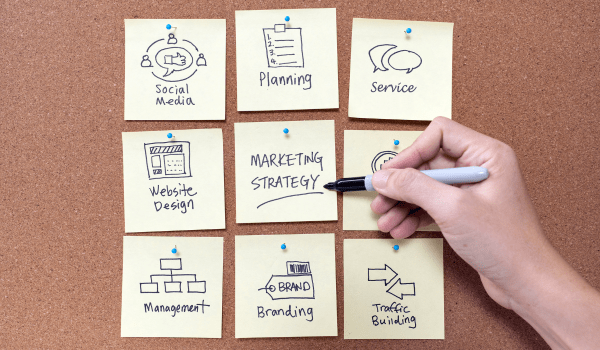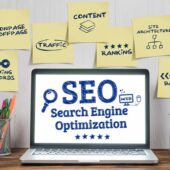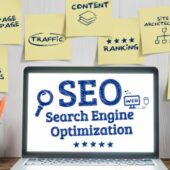In the ever-evolving landscape of marketing, terms like “Inbound Marketing” and “Digital Marketing” often get tossed around interchangeably, leading to confusion among marketers and businesses alike. While both methodologies harness the power of the digital realm, they serve distinct purposes and employ different strategies. Let’s delve deeper into the realms of Inbound Marketing and Digital Marketing to understand their nuances and determine which approach is best suited for your business objectives.
Defining Inbound Marketing
Inbound Marketing revolves around attracting potential customers through valuable content, engaging experiences, and tailored interactions. Unlike traditional outbound methods that interrupt audiences, Inbound Marketing seeks to pull prospects in by providing relevant and helpful information that addresses their pain points and interests. It’s all about building trust, establishing authority, and fostering meaningful connections with your target audience.
Key components of Inbound Marketing include
Content Creation
Producing high-quality, informative content that resonates with your audience’s needs and preferences. This encompasses blog posts, eBooks, videos, webinars, and other forms of content designed to educate, entertain, or inspire.
SEO (Search Engine Optimization)
Optimizing your content and website to rank higher in search engine results, thereby increasing visibility and attracting organic traffic. This involves keyword research, on-page optimization, link building, and other SEO best practices.
Social Media Marketing
Leveraging social media platforms to engage with your audience, share valuable content, and foster community interaction. Social media serves as a channel for distributing your content, amplifying your brand message, and cultivating relationships with potential customers.
Email Marketing
Nurturing leads and staying connected with prospects through targeted email campaigns. Email marketing allows for personalized communication, lead segmentation, and automation, enabling you to deliver the right message to the right people at the right time.
Lead Generation
Implementing strategies to capture leads and guide them through the sales funnel. This involves offering valuable incentives such as eBooks, webinars, or free trials in exchange for contact information, and then nurturing leads with relevant content until they are ready to make a purchase decision.
Understanding Digital Marketing
Digital Marketing encompasses a broader spectrum of marketing activities conducted through digital channels such as websites, search engines, social media, email, and mobile apps. While Inbound Marketing is a subset of Digital Marketing, the latter includes both inbound and outbound tactics aimed at reaching and engaging audiences online.
Key components of Digital Marketing include
Paid Advertising
Running targeted advertising campaigns on platforms like Google Ads, social media ads, display ads, and sponsored content to reach specific audience segments and drive traffic, leads, or sales. Paid advertising allows for precise targeting, real-time optimization, and measurable results.
Website Optimization
Ensuring that your website is user-friendly, mobile-responsive, and optimized for conversions. This involves optimizing site speed, improving navigation, creating compelling calls-to-action, and implementing conversion rate optimization techniques to enhance the overall user experience and drive desired actions.
Analytics and Data Insights
Utilizing data analytics tools to track, measure, and analyze the performance of your digital marketing efforts. By gathering insights into user behavior, traffic sources, conversion rates, and other metrics, you can make data-driven decisions to optimize your campaigns and maximize ROI.
Online Reputation Management
Managing your brand’s online reputation through monitoring and responding to customer reviews, social media mentions, and online feedback. Online reputation management helps build trust, credibility, and positive brand perception among your target audience.
E-commerce Marketing
Promoting and selling products or services through online channels such as e-commerce websites, marketplaces, and mobile apps. E-commerce marketing involves strategies for product listings, pricing optimization, shopping cart abandonment recovery, and customer retention to drive sales and revenue.
The Verdict: Which Is Right for You?
While Inbound Marketing and Digital Marketing share common objectives of reaching and engaging audiences online, their approaches and tactics differ in scope and strategy. Inbound Marketing focuses on attracting, engaging, and delighting customers through valuable content and personalized experiences, whereas Digital Marketing encompasses a broader range of activities including paid advertising, website optimization, analytics, and e-commerce.
Ultimately, the choice between Inbound Marketing and Digital Marketing depends on your business goals, target audience, budget, and resources. For businesses looking to build long-term relationships with customers, establish thought leadership, and drive organic growth, Inbound Marketing may be the preferred approach. On the other hand, businesses seeking immediate results, targeted reach, and measurable ROI may benefit from a comprehensive Digital Marketing strategy that combines both inbound and outbound tactics.
Check Also: –
- Digital Marketing Agency in Ahmedabad
- Best Digital Marketing Company in Ahmedabad
- Digital Marketing Services in Ahmedabad
Conclusion
Whether you opt for Inbound Marketing, Digital Marketing, or a hybrid approach, the key is to align your marketing efforts with your overall business objectives and audience preferences. By understanding the distinctions between these methodologies and leveraging the right mix of strategies and channels, you can create impactful marketing campaigns that resonate with your target audience and drive business success in the digital age.





